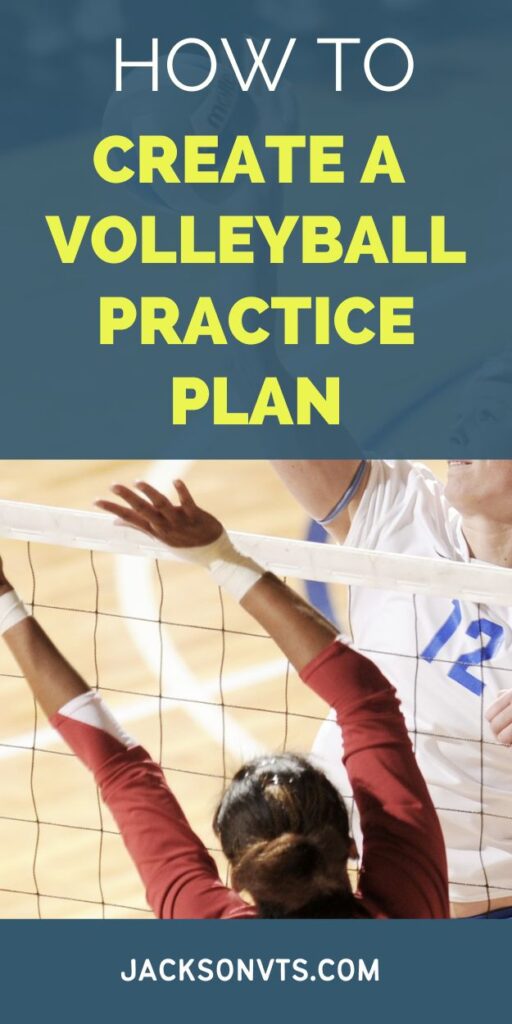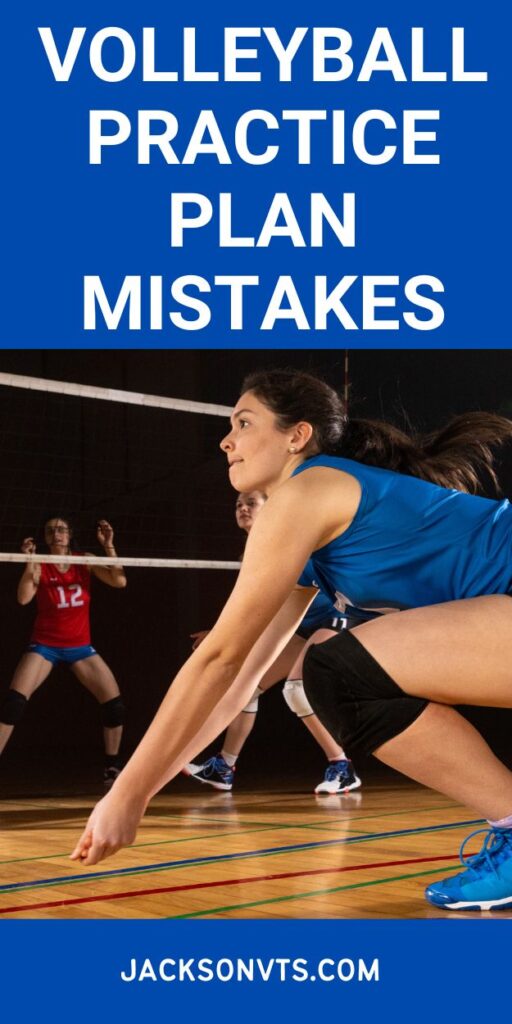A volleyball practice plan should be design with the following variables kept in mind.
4 Variables All Coaches Should Consider
1. Player Skill Level. The coach needs to create drills to match the skill level of the team. For example, a beginner volleyball player would need to spend more time on learning the fundamentals of serving, passing, setting and spiking. Rather than scrimmaging, the players should spend most of the time on individual playing skills. Once the basic skills are developed, the players can attempt to perform in a real game situation.
2. Goals and Objectives. Each practice needs to have specific goals. When a coach creates a specific goal, the team will know what they need to focus on during practice. Each player on the team needs to be aware of what the goals are so they can be aware of the progress they are making in practice. When you focus on what you are doing, you become more aware of how well or poor you are performing. The more specific you can be, the better. For example, executing a skill with certain technique. Or focus on achieving a specific result from a drill, such as serving to zones. Set a goal of hitting 5 serves in a row to zone 1 will help the player focus on a specific goal.
If you are finding this information helpful and would like to keep it close to you, please save this to your Pinterest Board.

3. Time Constraints. The coach needs to plan for the time available to practice. Time is usually the biggest factor when it comes to planning practices. Most teams have a limited time and so the coach needs to plan an efficient practice so the team can get in as much work as possible.
4. Position-Specific Training. Players need to develop specialized skills for their role on the team. For example, a setter needs to develop communication and leadership skills. The setter also needs to develop good hand setting mechanics. The libero needs to spend most of the time developing serve receive and defensive skills. Each player needs to understand their role on the team. The better a player understands their responsibilities, the better they will be at helping the team.
As a coach it’s important to consider these variables when planning a volleyball practice plan.
7 Common Mistakes in Designing a Volleyball Practice Plan
When creating a volleyball practice plan, it’s best to avoid these common mistakes.
1. Not Creating Goals. Goals help athletes stay focus on what needs to be accomplished. There are all kinds of goals. There are goals for individual practices. For example, the focus for the day could be on improving passing. Accomplishing the goal of passing the ball to the target for 3 consecutive passes. Or spiking to a target for 3 consecutive hits. These are specific goals players could focus on for a specific practice. Then there are season goals. The team and coach needs to come up with goals for the team to accomplish by the end of the season. The could be to win a tournament or win a conference championship. Players could have individual goals such as making the varsity team or increasing the vertical 5 inches. These are just some examples of goals players, teams, and coaches can set.
2. Practicing With Poor Technique. You don’t want to make the mistake of creating bad habits. Practice good technique to avoid creating habits that will be hard to break. For example, don’t let players swing the arms when passing. Swinging the arms will be a very difficult habit to break.
3. Not Consider the Time Available. You need to structure your practice in a way that will allow you enough time to practice skill development and game-like situations.
4. Structuring the Drills in the Wrong Order. Always focus on technical skills early in practice. Players will become fatigued by the end of practice, so be sure to get the technical skills that need concentration early in practice.
If you are finding this information helpful and would like to keep it close to you, please save this to your Pinterest Board.

5. Creating Drills that Are Too Difficult. Create drills that fit well with the skill level of the players. Creating drills that are too advanced will likely frustrate players. Error on the side of drills being to easy. Early success will give players confidence. If you players succeed early in their career they are more likely to continue to want to play.
6. Believing Practice Should be Boring. If you do a good job designing practice, volleyball can be fun all the time. Volleyball doesn’t ever need to be boring. Volleyball can be difficult, but should always be fun.
7. Poorly Scheduled Conditioning Drills. Be mindful to avoid conflicting your conditioning with the technical skills training. Practice technical skills when fresh. If you’re going to condition the team, aim to condition after the technical skills training so you can avoid the players from being too fatigue to execute the skills with good technique.
Volleyball Practice Plan
